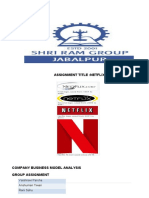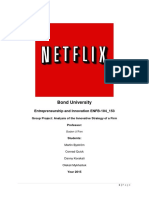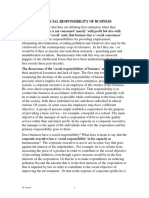0% found this document useful (0 votes)
35 views16 pagesChapter 1 Project
The document explores the evolution and impact of Netflix as a leading Over-The-Top (OTT) streaming service since its inception in 1997, highlighting its transition from a DVD rental service to a global streaming giant. It discusses Netflix's commitment to original content, its global expansion, and the challenges it faces in a competitive landscape. Additionally, the document outlines various OTT revenue models, recent trends, and challenges in the industry, including content acquisition costs and data privacy concerns.
Uploaded by
DineshCopyright
© © All Rights Reserved
We take content rights seriously. If you suspect this is your content, claim it here.
Available Formats
Download as DOCX, PDF, TXT or read online on Scribd
0% found this document useful (0 votes)
35 views16 pagesChapter 1 Project
The document explores the evolution and impact of Netflix as a leading Over-The-Top (OTT) streaming service since its inception in 1997, highlighting its transition from a DVD rental service to a global streaming giant. It discusses Netflix's commitment to original content, its global expansion, and the challenges it faces in a competitive landscape. Additionally, the document outlines various OTT revenue models, recent trends, and challenges in the industry, including content acquisition costs and data privacy concerns.
Uploaded by
DineshCopyright
© © All Rights Reserved
We take content rights seriously. If you suspect this is your content, claim it here.
Available Formats
Download as DOCX, PDF, TXT or read online on Scribd
/ 16




















































































